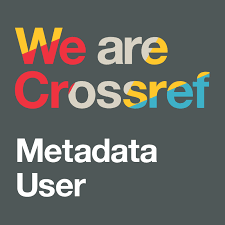Harakatul Jannah Mosque: Minang Identity and Islamic Mission in Diaspora (Rantau)
Authors :
Abstract
This article discusses the efforts to strengthen cultural and ethnic identity the Minang people in diaspora (rantau), specifically in the context of the Harakatul Jannah mosque in Gadog, Ciawi, Bogor, West Java. In addition to being a symbol of the acculturation Minangkabau culture in the local community, this mosque preserves the social and religious institutions of Minangkabau custom in diasporic lands. This study uses a qualitative method. Data collection is done not only through literature review but also through direct observation. Analysis of collected data is based on heuristic, verification, interpretation, and historiographical techniques. This study finds that through the Harakatul Jannah mosque, the diasporic community from Minangkabau is able to relive the Minang tradition in social activities, education, as well as architecture. Combining European and Middle Eastern styles with traditional styles, this mosque was constructed without losing Minangkabau cultural characteristics, which are reflected in several elements, such as the Bundo Kanduang Gate, the Hajjah Tower, and the Majlis of Shaykh Ahmad Khatib al-Minangkabawi. These are manifestations of archipelago culture in architecture. In the field of education, the activities of the students and the community of the mosque shows many similarities with the Islamic intellectual tradition of 19th century Minangkabau. All educational and religious activities in the mosque aim at preserving and strengthening the Minang cultural identity in diasporic lands.
Artikel ini membahas tentang penguatan identitas budaya dan kesukuan orang Minang di tanah rantau melalui Masjid Harakatul Jannah di Gadog, Ciawi, Bogor. Selain menjadi simbol akulturasi budaya Minangkabau, masjid ini menjadi jejak pranata sosial keagamaan pamangku adat Minangkabau di ranah rantau. Penelitian ini menggunakan metode kualitatif. Pengumpulan data dilakukan selain melalui kajian kepustakaan juga observasi langsung. Berdasarkan penelitian yang dilakukan ditemukan bahwa melalui masjid Masjid Harakatul Jannah, para perantau dari Minangkabau menghidupkan tradisi Minang baik dalam aktivitas sosial, pendidikan, dan keagaman maupun arsitektur bangunan. Manifestasi arsitektur itu di antaranya menggabungkan gaya Eropa dan Timur Tengah dengan gaya tradisional pada bangunan mesjid. Hal ini tercermin dalam beberapa elemen masjid, seperti pintu Bundo Kanduang, Tower haji, dan Majlis Shaykh Ahmad Khatib al-Minangkabawi. Sementara itu dalam bidang pendidikan, aktivitas model surau yang dimodifikasi menunjukkan kemiripan dengan tradisi intelektual Islam di Minangkabau abad ke-19. Dengan demikian, arsitek bangunan dan aktivitas keagamaan di masjid tersebut merupakan bentuk penguatan identitas budaya Minang di tanah rantau.
Keywords
Full Text:
PDFReferences
Books
Abidin, Mas’oed, Adat dan Syarak di Minangkabau (Sumatera Barat: Pengkajian Islam dan Minangkabau, 2004)
Azra, Azyumardi, Surau: Traditional Islamic Education in Transition and Modernisasi (Jakarta: Kencana, 2017)
Fauzia, Amelia, Irfan Abubakar, Mohamad Nabil, Noorhaidi Hasan, Nur Imroatus, Ridwan Al-Makassary, and others, Masjid dan Pembangunan Perdamaian: Studi Kasus Poso, Ambon, Ternate, dan Jayapura (Jakarta: Center for the Study of Religion and Culture (CSRC) Universitas Islam Negeri (UIN) Syarif Hidayatullah Jakarta, 2011)
Gazalba, Sidi, Masjid Pusat Ibadah dan Kebudayaan Islam (Jakarta: Pustaka Antara, 1983)
Graves, Elizabeth E, The Minangkabau Response to Dutch Colonial Rule in the Nineteenth Century (Itacha: Cornell Southeast Asia Program, 1981)
Hall, Stuart, Cultural Identity and Diaspora (London: Lawrence & Wishart, 1990)
Haris, Tawalinuddin, Masjid-Masjid Bersejarah di Jakarta (Jakarta: Erlangga, 2010)
Hodgson, Marshall G. S., The Venture of Islam, Conscience and History in a World Civilization, Volume 1: The Classical Age of Islam (Chicago: University of Chicago Press, 1974)
Kato, Tsuyoshi, Adat Minangkabau dan Merantau dalam Perspektif Sejarah (Jakarta: Balai Pustaka, 2005)
———, Matriliny, and Migration: Evolving Minangkabau Traditions in Indonesia (Ithaca and London: Cornell University Press, 1982)
Naim, Mochtar, Merantau Pola Migrasi Suku Minangkabau (Yogyakarta: Gadjah Mada University Press, 1984)
Team, DKM, Brief Profile of Harakatul Jannah Mosque Reflections on World Civilization (Bogor: n.p, n.t)
Tjandrasasmita, Uka, Arkeologi Islam Nusantara (Jakarta: Kepustakaan Populer Gramedia, 2009)
Journals
Abdullah, Fauziah Hanum, Noor Hanita Abdul Majid, and Rosniza Othman, ‘Defining Issue of Thermal Comfort Control through Urban Mosque Façade Design’, Procedia - Social and Behavioral Sciences, 234 (2016), 416–23
Adi, Swambodo Murdariatmo, ‘Mosque as a Model of Learning Principles of Sustainable Architecture’, Journal of Islamic Architecture, 4 (2016), 33
Ahmad, Tayyab, Muhammad Jamaluddin Thaheem, Amad Anwar, and Zia Ud Din, ‘Implications of Stereotype Mosque Architecture on Sustainability’, Procedia Engineering, 145 (2016), 96–103
Alimin, Nurhayatu Nufut, ‘Masjid Raya Sumatra Barat Sebagai Simbol Persatuan Muslim di Sumatra Barat’, Invensi, 1 (2016), 80–89
Baidhawy, Zakiyuddin, ‘Muatan Nilai-Nilai Multikultural dan Antimultikultural dari Mimbar Masjid di Kota Solo’, Analisa, 21 (2014), 173–87
Dewiyanti, Dhini, Widjaja Martokusumo, Budi Faisal, and Bambang Setia Budi, ‘The Notion of Campus Mosques Design: A Description of the Mosques Presence at the Higher Education Institutions’, International Journal of Applied Business and Economic Research, 14 (2016), 793–814
Ebrahimi, Mansoureh, and Kamaruzaman Yusoff, ‘The Impact of Cultural Diversity on Mosques in Malaysia’, Asian Culture and History, 10 (2018), 45
Fahmi, Reza, ‘The Paradox of Islam And Culture (Tradition And Belief Abot Gender Perspective In West Sumatra)’, Buletin Al-Turas, 20 (2014), 313–24
Fauzia, Amelia, Irfan Abubakar, Mohamad Nabil, Noorhaidi Hasan, Nur Imroatus, Ridwan Al-Makassary, and others, Masjid Dan Pembangunan Perdamaian: Studi Kasus Poso, Ambon, Ternate, Dan Jayapura (Jakarta: Center for the Study of Religion and Culture (CSRC) Universitas Islam Negeri (UIN) Syarif Hidayatullah Jakarta, 2011)
Handayani, Tri Wahyu, and Tita Cardiah, ‘Geometric Ornaments Synthesis In Chinese Mosque’, Multidisciplinary Design, 2016, 304–11
Hanif, Mohamad, Abdul Wahab, and Azizi Bahauddin, ‘Proceedings of the Art and Design International Conference (AnDIC 2016)’, Proceedings of the Art and Design International Conference (AnDIC 2016), 2018
Haris, Tawalinuddin, ‘Masjid-Masjid di Dunia Melayu Nusantara’, Suhuf, 3 (2010), 279–307
Hastuti, Erni, Defi Julianti, Donny Erlangga, and Teddy Oswari, ‘Kearifan Lokal Sosial Budaya Masyarakat Minang Pedagang Rantau di Jakarta’, Psikologi, Ekonomi, Sastra, Arsitektur & Teknik
Hossain, Ishrat, Aliyu Dahiru Muhammad, Binta Tijjani Jibril, and Simeon Kaitibie, ‘Support for Smallholder Farmers through Islamic Instruments: The Case of Bangladesh and Lessons for Nigeria’, International Journal of Islamic and Middle Eastern Finance and Management, 12 (2019), 154–68
Kamil, Sukron, and Zakiyah Darojat, ‘Mosques and Muslim Social Integration: Study of External Integration of the Muslims’, Insaniyat, 4 (2019), 37–48
Karlsson, Pia, and Amir Mansory, ‘Islamic and Modern Education in Afghanistan - Conflictual or Complementary ?’, Institute of International Education, 2008, 1–24
Kurniawan, Hendra, ‘The Role of Chinese in Coming of Islam To Indonesia: Teaching Materials Development Based on Multiculturalism’, Paramita - Historical Studies Journal, 27 (2017), 238–48
Majestica, Randy, ‘Di Luhak Nan Tigo (Luhak Tanah Datar , Luhak Agam , Luhak Lima Puluh Kota)’, Program Pascasarjana, 6 (2016), 1–28
Michiani, Meidwinna Vania, and Junichiro Asano, ‘Influence of Inhabitant Background on the Physical Changes of Banjarese Houses: A Case Study in Kuin Utara Settlement, Banjarmasin, Indonesia’, Frontiers of Architectural Research, 5 (2016), 412–24
Mustafa, Faris Ali, and Ahmad Sanusi Hassan, ‘Mosque Layout Design: An Analytical Study of Mosque Layouts in the Early Ottoman Period’, Frontiers of Architectural Research, 2 (2013), 445–56
Muttaqin, Ahmad, Achmad Zainal Arifin, and Firdaus Wajdi, ‘Problems, Challenges and Prospects of Indonesian Muslim Community in Sydney for Promoting Tolerance’, International Journal of Indonesian Society and Culture, 8 (2016), 169–84
Omer, Spahic, ‘Some Lessons from Prophet Muhammad (SAW) in Architecture: The Prophet’s Mosque in Madīnah’, Intellectual Discourse, 18 (2010), 115–40
Saliyo, ‘Empowerment of “Prospering Mosque” With Islamic Activity to Increase Psycjological Awareness In The Practice of Religious Tolerance’, Ijtimā’iyya, 3 (2018), 1–20
Sinaga, Ganda Saputra, ‘Ekspresi Vernakular Minangkabau Pada Masjid Raya Gantiang’, Seminar Ikatan Peneliti Lingkungan Binaan Indonesia, 2017, 133–38
Sukawi, Sukawi, ‘Jam Kota, Bukan Sekedar Elemen Estetis Kota’, Jurnal Nasional, 2007
Sunarti, Sastri, ‘Suara-Suara Islam Dalam Surat Kabar Dan Majalah Terbitan Awal Abad 20 Di Minangkabau’, Buletin Al-Turas, 21 (2015), 229–42
Törnberg, Anton, and Petter Törnberg, ‘Muslims in Social Media Discourse: Combining Topic Modeling and Critical Discourse Analysis’, Discourse, Context and Media, 13 (2016), 132–42
Interviews
Chaidir, Ade (Head section of P.K.M.), Interview, {September 22, 2017}.
Effendi, Syahrul (the Founder of Masjid Harakatul Jannah-Bogor), Interview {September 15, 2017}.
Irvan, (Secretary of the MUI Bogor Regency Organization and Foreign Relations Commission), Interview {September 12, 2017}.
Mulyana, Agus (Chairman of the Harakatul Jannah Mosque, Bogor), Interview {September 22, 2017}.
Ulum, Bahrul (Head section of the Ministry of Religion, Bogor Sub-district), Interview {September 12, 2017}.
DOI: http://dx.doi.org/10.30983/islam_realitas.v6i1.3234
Refbacks
- There are currently no refbacks.
Copyright (c) 2020 Abdul Wahid Hasyim, Yulia Kartika

This work is licensed under a Creative Commons Attribution-ShareAlike 4.0 International License.
______________________________________________________________________
 | Islam Realitas: Journal of Islamic and Social Studies |




